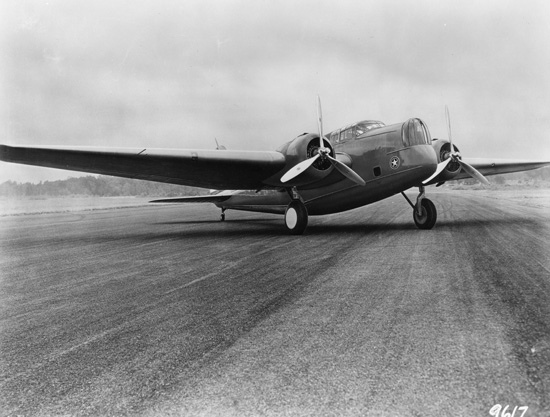
|
Martin 146 | |||
|---|---|---|---|---|
| |
|
|||

|
||||
|
The Martin 146 was designed for a USAAC competition, announced on August 6, 1934, to find a modern replacement for the assorted twin-engine Keystone biplane bombers. The requirement was for a multi-engine bomber, to be used mostly for coastal-defense. The Martin 146 competed against the Douglas DB-1 (B-18) and Boeing Model 299 (B-17 Flying Fortress).
At the time, the Martin B-10 was the latest bomber in service and the US Army Air Corps was generally satisfied with the plane. However, they were now looking for a longer range aircraft with the following requirements: | ||||
| • | Range of at least 1,020 miles (1,640 km). | • | Speed of 200 to 250 mph (322 to 402 km/h). | • | Bomb load of 2,000 lb (907 kg).2 |
| The Martin 146 was not much of an improvement over the Martin B-10. It had the same configuration of turrets and engines with the main difference being that the cockpit had side-by-side seating for the pilots. It was powered by two 800 hp Wright R-1820-G5 Cyclone engines. The wing span was 75 ft. 1 in. (22.9 m) and the length was 52 ft. 0 in. (15.5 m). The top speed was 234 mph (377 km/h) and had a service ceiling of 28,500 ft. (8,687 m). Armament consisted of three 0.30 caliber machine guns and could carry a bomb load of 2,260 lbs. (1,030 kg). |
Return to Aircraft Index
© The Aviation History On-Line Museum.
All rights reserved.
August 28, 2013.